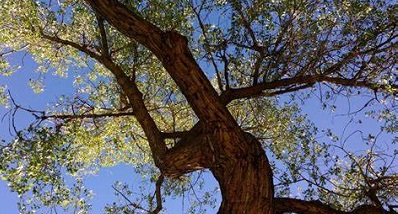TREES
 What's property without a tree? A big hot mess. Trees provide oxygen and shade, but you already know that. A canopy can provide an almost ten degree difference, cooler in the summer, warmer in the winter and not coincidentally, greatly increase your property value.
What's property without a tree? A big hot mess. Trees provide oxygen and shade, but you already know that. A canopy can provide an almost ten degree difference, cooler in the summer, warmer in the winter and not coincidentally, greatly increase your property value.
|
SATSUMA TANGERINE
Citrus 'Satsuma'
|
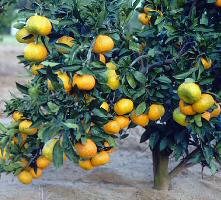
|
 Florida without Cirtus? Never! There are hundreds of edible varieties avaialable, yet Satsumas are the most cold hardly, maintenance free of the bunch. The modest dimensions are in perfect for residential properties. Not only will your friends and family enjoy the bountiful fruits, reliable early spring blooms will fill your head with romantic thoughts of yesteryear with their heady fragrance, regardless how cold the Winter was.
Florida without Cirtus? Never! There are hundreds of edible varieties avaialable, yet Satsumas are the most cold hardly, maintenance free of the bunch. The modest dimensions are in perfect for residential properties. Not only will your friends and family enjoy the bountiful fruits, reliable early spring blooms will fill your head with romantic thoughts of yesteryear with their heady fragrance, regardless how cold the Winter was.
|
|
LIVE OAK
Quercus virginiana
|
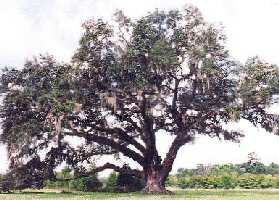
|
 While Florida hosts many native oaks, Live Oak is the motherlode. Other oaks grow faster, but the tradeoff is weak wood, something every homeowner should avoid, of course. Live Oaks are well behaved; their root systems do not endanger stuctures (unless planted directly next to concrete, and then only after many years) and a quick yearly pruning in beneficial. And with basic talents, you can create any shape possible, including topiaries or privacy hedges.
While Florida hosts many native oaks, Live Oak is the motherlode. Other oaks grow faster, but the tradeoff is weak wood, something every homeowner should avoid, of course. Live Oaks are well behaved; their root systems do not endanger stuctures (unless planted directly next to concrete, and then only after many years) and a quick yearly pruning in beneficial. And with basic talents, you can create any shape possible, including topiaries or privacy hedges.
|
|
SILK FLOSS TREE
Chorisia speciosa
|
 
|
 Professional growers have tested this tropical tree in Central Florida for cold hardiness with great results. While the spectacular show of pink flowers is enough to warrant it as a great landscape subject, the bright green bark randomly peppered with exotic thornlike potuberances and the pagoda growth habit is what sets this tree apart from all others. Heat, sun and fast draining soils ensure the fattest trucks and most numerous thorns. An added bonus are the large seedpods which release generous amounts of gossamer silk, hence the name. Interesting from top to bottom and thoughout the year.
Professional growers have tested this tropical tree in Central Florida for cold hardiness with great results. While the spectacular show of pink flowers is enough to warrant it as a great landscape subject, the bright green bark randomly peppered with exotic thornlike potuberances and the pagoda growth habit is what sets this tree apart from all others. Heat, sun and fast draining soils ensure the fattest trucks and most numerous thorns. An added bonus are the large seedpods which release generous amounts of gossamer silk, hence the name. Interesting from top to bottom and thoughout the year.
|
|
MAST TREE
Chorisia speciosa
|
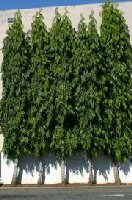 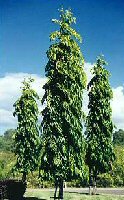
|
 The Sacred Asoka Tree, or Mast Tree, is an evergreen native to India, planted throughout Southeast Asia not only for its strong vertical architectural dimensions, but also for its effectiveness in reducing noise pollution, which is attributed to its unique leaf shape. It exhibits symmetric pyramidal growth with willow-like weeping pendulous branches retained throughout is life. With age, this tree reaches over 30 feet tall, but never more than four feet across.
The Sacred Asoka Tree, or Mast Tree, is an evergreen native to India, planted throughout Southeast Asia not only for its strong vertical architectural dimensions, but also for its effectiveness in reducing noise pollution, which is attributed to its unique leaf shape. It exhibits symmetric pyramidal growth with willow-like weeping pendulous branches retained throughout is life. With age, this tree reaches over 30 feet tall, but never more than four feet across.
 Still uncommon in the Americas, this carefree beautiful tree is an excellent substitute for the Italian Cypress, immune to the diseases and problems encountered with the latter. It also tends to produce deep vertical roots, instead of vertical ones, making it useful for planting adjacent to walls and other structures without worries about intrusion damage. Our favorite new introduction.
Still uncommon in the Americas, this carefree beautiful tree is an excellent substitute for the Italian Cypress, immune to the diseases and problems encountered with the latter. It also tends to produce deep vertical roots, instead of vertical ones, making it useful for planting adjacent to walls and other structures without worries about intrusion damage. Our favorite new introduction.
|
|
RAINBOW GUM
Eucalyptus deglupta
|
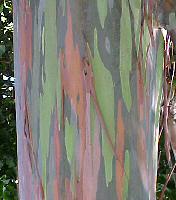
|
 This large trophy tree is still rare in Florida cultivation, hence costly. Growing this tree not only gives bragging rights, but you'll be the proud owner of a supremely beautiful plant you'll never tire to behold and will cause awe to those who view it for the first time. The artificial appearing smooth peeling bark of this tree is a spectrum of color (yellow, purple, green, orange, pink, you name it!) which no photographs can do justice and only gets more colorful as it ages. Loves moisture. Be the first in your town to have one!
This large trophy tree is still rare in Florida cultivation, hence costly. Growing this tree not only gives bragging rights, but you'll be the proud owner of a supremely beautiful plant you'll never tire to behold and will cause awe to those who view it for the first time. The artificial appearing smooth peeling bark of this tree is a spectrum of color (yellow, purple, green, orange, pink, you name it!) which no photographs can do justice and only gets more colorful as it ages. Loves moisture. Be the first in your town to have one!
|
|
LOQUAT
Eriobotrya japonica
|
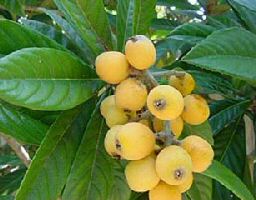 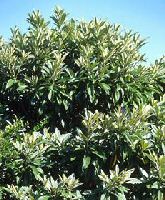
|
 This evergreen tree hails from southern China. Large dark green leaves impart a tropical feel to any Landscape, despite it's cold hardiness. Besides being pest free and adaptibility to thrive in almost any growing condition, it provides abundant honey scented flowers in the dead of winter, a welcome time for any fragrance. All caveats aside, the most beneficial gift to the garden that this small tree provides are the abundant delicious fruits, containing high concentrations of vitamin C. Grow one for your health.
This evergreen tree hails from southern China. Large dark green leaves impart a tropical feel to any Landscape, despite it's cold hardiness. Besides being pest free and adaptibility to thrive in almost any growing condition, it provides abundant honey scented flowers in the dead of winter, a welcome time for any fragrance. All caveats aside, the most beneficial gift to the garden that this small tree provides are the abundant delicious fruits, containing high concentrations of vitamin C. Grow one for your health.
|
|
BALD CYPRESS
Taxodium distchicum
|
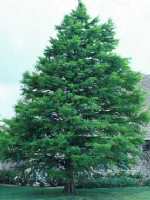
|
 Although found all along the eastern forests of America, Bald Cypress is seen as a symbol of the mysterious, dark swamps of the Deep South. No, Bald Cypress doesn't require standing in water nor does it exhibit the trademark forlorn shapes when planted in the garden. In fact, when used in the landscape, they surprisingly grow in perfect conical shapes. Providing a cooling light shade in the summer and allowing warm sun to shine through the naked, relatively few branches in the winter, it is a perfect Florida tree. The leaves are so fine, they virtually dissappear on the ground after falling, hence no cleanup. Another slow, yet surely gowing, pest-free, hurricane-proof tree for our area. The great age these patriachs reach assures that you are planting for prosperity.
Although found all along the eastern forests of America, Bald Cypress is seen as a symbol of the mysterious, dark swamps of the Deep South. No, Bald Cypress doesn't require standing in water nor does it exhibit the trademark forlorn shapes when planted in the garden. In fact, when used in the landscape, they surprisingly grow in perfect conical shapes. Providing a cooling light shade in the summer and allowing warm sun to shine through the naked, relatively few branches in the winter, it is a perfect Florida tree. The leaves are so fine, they virtually dissappear on the ground after falling, hence no cleanup. Another slow, yet surely gowing, pest-free, hurricane-proof tree for our area. The great age these patriachs reach assures that you are planting for prosperity.
|
|
ARIZONA CYPRESS
Cypressus arizonica var. glabra
|
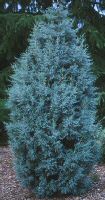 
|
 This conifer displays a beautiful silver-blue color. When crushed, the foilage is scented exactly like Grapefruits. Must have full sun and well draining soils..
This conifer displays a beautiful silver-blue color. When crushed, the foilage is scented exactly like Grapefruits. Must have full sun and well draining soils..
|
|
CRAPE MYRTLE
Laegerstromia indica
hybrids
|
 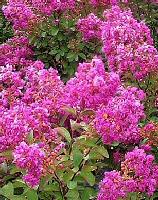 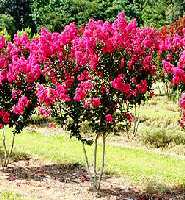
|
 An old favorite Southern Landscape staple, with good reasons. It's smaller size, ability to grow in the most unfavorable conditions, a guaranteed blooming cycle and the sculpturesque growth habit with attractive colorful peeling bark count among the top reasons, but it's freedom from pests and fall color are big bonuses for Florida. The only care thay need is a quick hard pruning of the thinnest branches in late Feburary to ensure a bumper crop of blossoms in the late Spring/Early summer flowering season. Luckily, colors range from white, red, purple and every shade in between. Excels as a backdrop for other foilage.
An old favorite Southern Landscape staple, with good reasons. It's smaller size, ability to grow in the most unfavorable conditions, a guaranteed blooming cycle and the sculpturesque growth habit with attractive colorful peeling bark count among the top reasons, but it's freedom from pests and fall color are big bonuses for Florida. The only care thay need is a quick hard pruning of the thinnest branches in late Feburary to ensure a bumper crop of blossoms in the late Spring/Early summer flowering season. Luckily, colors range from white, red, purple and every shade in between. Excels as a backdrop for other foilage.
|
|
LITTLE GEM MAGNOLIA
Magnolia grandiflora 'Little Gem'
|
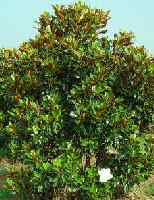 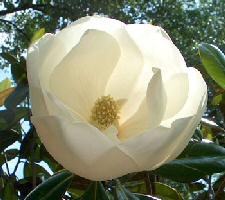
|
 Southern Magnolias are beautiful in their own right, but recent horticultural advances have given us better cultivars, "Little Gem" being the most popular. It holds very dark evergreen leaves with fuzzy brown backsides, and its smaller, fuller dimensions fit right in with residential properties. It produces large white lemon soap scented flowers sporadically during the warming days of the year.
Southern Magnolias are beautiful in their own right, but recent horticultural advances have given us better cultivars, "Little Gem" being the most popular. It holds very dark evergreen leaves with fuzzy brown backsides, and its smaller, fuller dimensions fit right in with residential properties. It produces large white lemon soap scented flowers sporadically during the warming days of the year.
|
|
DRAKE ELM
Ulmus parviflora
|
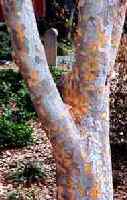 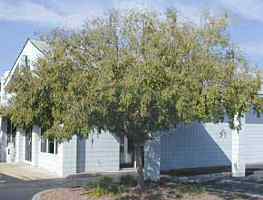
|
 A modest sized tree good for non irrigated properties, growing without any care whatsoever. The trait that makes these trees special is the wonderfully colorful bark, ever changing color as it naturally peels off the tree. The bad news is that we don't recommend this for the average homeowner. This tree is a survivor due to the incredible strengh of the massive shallow root structure, sucking away any hint of moisture away from other plants. In a short time, nothing else is able to grow in its vicinity. This makes it a perfect choice for commercial, industrial and utility landscapes. parking lots and dog parks.
A modest sized tree good for non irrigated properties, growing without any care whatsoever. The trait that makes these trees special is the wonderfully colorful bark, ever changing color as it naturally peels off the tree. The bad news is that we don't recommend this for the average homeowner. This tree is a survivor due to the incredible strengh of the massive shallow root structure, sucking away any hint of moisture away from other plants. In a short time, nothing else is able to grow in its vicinity. This makes it a perfect choice for commercial, industrial and utility landscapes. parking lots and dog parks.
|
|
WEEPING YAUPON HOLLY
Ilex vomitoria
|
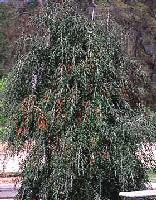 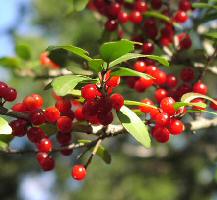 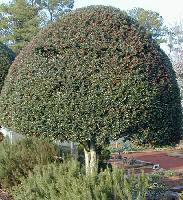
|
 Please don't use the vicious, spiny American Holly, unless you enjoy attracting lawsuits. Weeping Yaupon Holly, sport of another American native, has small friendly leaves, yet still festooned with liberal amount of those famous seasonal berries. This awesome tree can be clipped, shaped or tortuted to any form, and trives in any soil. Birds are rightfully attracted to the fruits, rewarding you with free fertilzer for next year's crop. Thanks!
Please don't use the vicious, spiny American Holly, unless you enjoy attracting lawsuits. Weeping Yaupon Holly, sport of another American native, has small friendly leaves, yet still festooned with liberal amount of those famous seasonal berries. This awesome tree can be clipped, shaped or tortuted to any form, and trives in any soil. Birds are rightfully attracted to the fruits, rewarding you with free fertilzer for next year's crop. Thanks!
|
|
AMERICAN SYCAMORE
Platanus occidentalis
|
 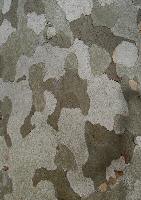
|

 If you have the space and are looking for a stately tree, this is a good contender. Rapidly growing tall, staight and pyramidical, this tree seems to have no problems with pests in our subtropics, despite being a temperate plant. Its bonuses are the smooth, whitish patterned back, exposed in the Winter, and its giant leaves, which drop from the tree early in comparison to other trees. You may think these involve a yearly raking up, yet due to the large size, the leaves are blown far away with the Fall winds, but don't tell anyone.
If you have the space and are looking for a stately tree, this is a good contender. Rapidly growing tall, staight and pyramidical, this tree seems to have no problems with pests in our subtropics, despite being a temperate plant. Its bonuses are the smooth, whitish patterned back, exposed in the Winter, and its giant leaves, which drop from the tree early in comparison to other trees. You may think these involve a yearly raking up, yet due to the large size, the leaves are blown far away with the Fall winds, but don't tell anyone.
|
|
PINK TRUMPET TREE
Tabebuia pentaphylla
|
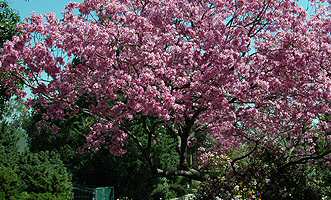
|
 This tree should fulfill everyone's longing for northern flowering trees. In early spring it is festooned with large pink, yellow throated blossoms on its bare branches; a brief but showy standout in any garden. Children love the cotton candy scented fluffy flowers and the subsequent hanging green foot long seedpods. Hailing from the Carribean, these small trees are virtually hurricane proof, thrive on Florida's annual wet/dry cycles, yet are perfectly cold hardy.
This tree should fulfill everyone's longing for northern flowering trees. In early spring it is festooned with large pink, yellow throated blossoms on its bare branches; a brief but showy standout in any garden. Children love the cotton candy scented fluffy flowers and the subsequent hanging green foot long seedpods. Hailing from the Carribean, these small trees are virtually hurricane proof, thrive on Florida's annual wet/dry cycles, yet are perfectly cold hardy.
 The light colored trunk and branches always grow with character, holding foilage in almost horizontal tiers, which lends itself to naturalistic, romantic landscapes and asian gardens. The nondescript leaves blend in with any vegetation throughout the growing season, the low number of leaves make cleanup nonexistant when they are shed. No extra irrigation or fertilizer is ever needed, in fact it blooms better without pampering. It is also pest free, all of which makes this a vastly underused tree for Central Florida. Our reliable favorite.
The light colored trunk and branches always grow with character, holding foilage in almost horizontal tiers, which lends itself to naturalistic, romantic landscapes and asian gardens. The nondescript leaves blend in with any vegetation throughout the growing season, the low number of leaves make cleanup nonexistant when they are shed. No extra irrigation or fertilizer is ever needed, in fact it blooms better without pampering. It is also pest free, all of which makes this a vastly underused tree for Central Florida. Our reliable favorite.
|
|


